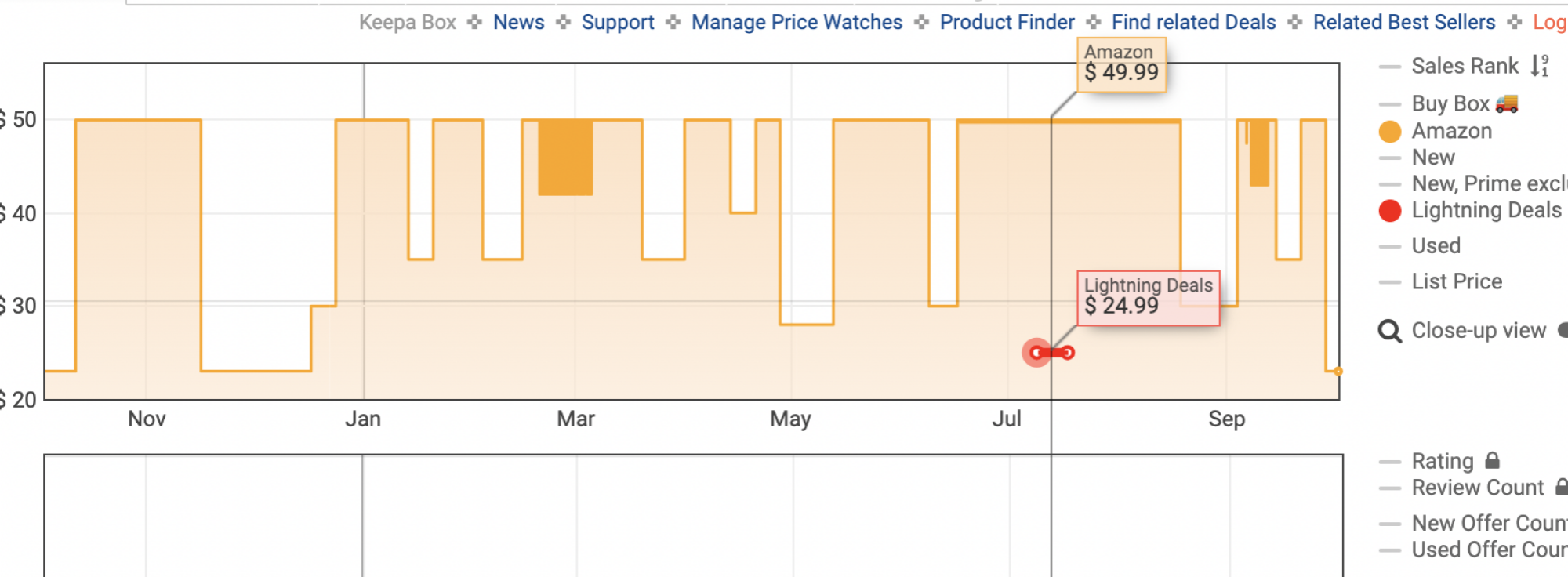Maximizing Your Savings this Amazon Prime Day
The highly anticipated Amazon Prime Day is on the horizon. This shopping extravaganza has been captivating consumers since its inception in 2015. This year, Prime members can look forward to a whirlwind of discounts across a vast array of products over two days—October 8 and 9. Furthermore, several early Prime Day deals are already available for savvy shoppers.
While there are numerous online resources that can guide you on how to capitalize on Prime Day savings, the most crucial advice remains: refrain from purchasing items you didn’t plan on buying beforehand. Moreover, if you encounter a deal on something you were already considering, ensure that it genuinely offers considerable savings.
Focus on Planned Purchases
The rationale behind sticking to your predetermined shopping list during Prime Day is that Amazon’s strategy often pushes consumers towards unplanned purchases. The intent of this promotional event is to spark buying impulses for items you may not necessarily need, while enticing you to consider an Amazon Prime subscription.
Like many sales, Amazon employs tactics like urgency by creating a “ticking clock” effect and instilling a false sense of scarcity. This is evident in their “lightning deals,” which are both time-sensitive and limited in availability. Such strategies prey on consumers’ fear of missing out. Phrases like “act fast!” or “while supplies last!” are classic marketing techniques, yet it’s unlikely that you will actually miss an opportunity, given the dynamic nature of Amazon’s pricing. Except in rare cases—such as highly sought-after holiday items—most products are unlikely to sell out completely. Therefore, adopting a long-term perspective on pricing may prove beneficial.
Beware of Misleading Discounts

The chart above, generated using Keepa, illustrates the erratic price movements of Amazon’s 5th Generation Echo Dot over the previous year. While not applicable to all products, it’s essential to recognize that pricing is not static.
Consumers often perceive that the price of a product remains consistent until a promotional event occurs, which is a misconception with Amazon. The advertised “list price” of $49.99 is quite adjustable; the product routinely appears at lower prices. For instance, the Prime Day price of $22.99 might feel like an urgent opportunity, yet following Prime Day, this price can simply revert to a higher rate before being adjusted again back to the Prime Day price from mid-November to mid-December. Thus, the need to hurry is mitigated.
During the previous winter Prime Days, this product received a “lightning deal,” but the advertised “lightning price” of $24.99 was actually above both the October Prime Day and the “holiday shopping” prices. Hence, it’s wise not to succumb to the perceived urgency.
Strategies for Securing the Best Prime Day Deals
To navigate through Prime Day effectively without succumbing to impulsive buying, consider the following strategies to enhance your chances of success.
Take Advantage of the Free Amazon Prime Trial
Participation in Prime Day sales requires an active Amazon Prime membership. While the regular subscription is priced at $14.99 monthly or $139 annually, first-time users can benefit from a 30-day trial, allowing you to snag those sought-after items and cancel afterward without any charge. Remember to set a reminder to cancel if necessary.
Students can avail themselves of a six-month Prime trial, followed by a monthly fee of $7.49. Additionally, for those on EBT or Medicaid, a discounted rate of $6.99 is available through the Amazon Access program, which includes a month of free access for new members.
Utilize Your Amazon Wishlist Effectively
Amazon’s wishlist feature can help keep buying impulses in check. Create a list titled “Items I Intend to Purchase” on Amazon’s list page and incorporate the items you’re hoping will see discounts. Commit to purchasing only these selected items, regardless of any enticing discounts on LED lightbulbs or other tempting offers.
Leverage Promotional Offers from Amazon
Previous Prime Days have seen Amazon providing various promotions that offer free credits redeemable for goods. Users earned these credits through methods such as opt-in for slower shipping, participating in movie screenings, and utilizing multiple Amazon services. Investigate these opportunities to effectively reduce expenses during Prime Day—you might find they are worth the effort, even if they involve a bit of extra work. Updates will be provided detailing this year’s promotional offers once they are active.
Set Your Own Price Thresholds
Employ retail comparison tools to verify that your intended Amazon purchase is genuinely a deal. Various apps and browser extensions offer comprehensive price histories for products on Amazon and can notify you when selected items hit your desired price point. Some even allow you to upload your wishlist and specify a spending limit—learn how to do this. This approach allows you to bypass impulsive purchases on Prime Day unless you receive the green light through your notifications.
Compare Prices with Competing Retailers
Even when the item you’ve been eyeing is displayed at an appealing discounted price on Amazon, resist the urge to finalize your order immediately. There may still be better deals elsewhere. Due to the competitive nature of Prime Day, other major retailers such as Walmart, Best Buy, and Target frequently run their own sales to rival Amazon. Therefore, ensure to compare these prices before making any purchases.
Consider Holding Off until November
If it’s manageable, exercising patience until next month may yield even better deals. While Prime Day generates significant attention, the most substantial discounts typically occur during the holiday shopping season. Savings on Black Friday are generally more considerable than those witnessed during Prime Day, unless the items in question are specific categories like school supplies and outdoor items, which rarely see sales in November.












